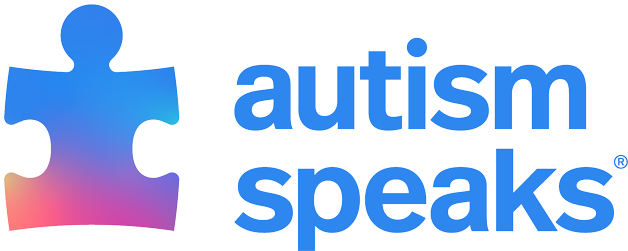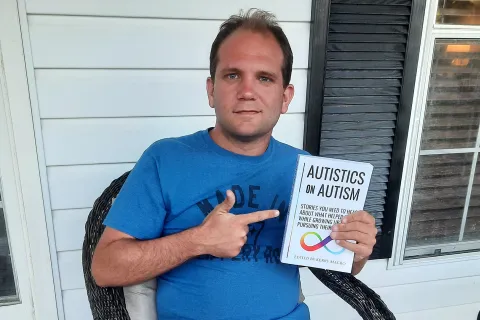Parents Seek Help for Behavioral Crises
This response is from child psychologist Lark Huang-Storms. Dr. Huang-Storms works within Autism Speaks Autism Treatment Network at Oregon Health and Science University, in Portland.
Our child – soon to be a teenager – has autism, and there are times when we find ourselves in a true behavioral crisis. What can we do besides call 911?
A meltdown can be really tough with a toddler and truly frightening in an adolescent or teenager – both for those witnessing it and for the child who has lost control. With an adolescent, the stress of surging hormones and increasingly complex social expectations can mount faster than coping strategies can keep up. As a result, it’s not uncommon to see an increase in out-of-control behaviors.
- Rule out or address underlying medical and sensory problems: First and foremost, it’s important to have your child evaluated for underlying medical and sensory issues that may be contributing to the meltdowns. Examples include the pain of GI distress, disrupted sleep and sensitivities to a jarring new school environment. So if you haven’t already, please consult with your child’s therapist and physician about evaluation possibilities.
- Look for the early signs: Clearly, it’s better to avoid an explosion than find yourself dealing with one. Sometimes an attentive parent can learn to recognize triggers and spot signs that tension is escalating. Your child’s behavioral therapist may be able to help you here. I find that parental attentiveness to emotional clues is particularly important for children with autism, who tend to have difficulty “self-monitoring.”
Tips to help calm an autistic teenager
But what if you, like so many of us, miss the early warning signs, and your child appears alarmingly close to damaging your home or hurting someone or himself? One thing is certain, there’s no way to rationally work through a behavioral crisis in the midst of one. Safety becomes the priority, and this may mean calling 911. However, here are some guidelines that can help keep everyone safe.
- Stay calm. Breathe. Your child’s behaviors will likely trigger your own strong emotions. You need to manage them. By way of analogy, think of an aggressive behavioral outburst as a fire. Don’t fan it with energy and excitement. Your goal is to smother it by remaining calm, patient, firm and reassuring.
- Talk quietly. Talk less. For many of us, the impulse is to talk when things are getting out of control. Remember that when someone is in full meltdown mode, he or she isn’t able to reason. Autism adds to this difficulty, even for highly verbal children. When highly stressed, your child may have difficulty understanding what anyone is saying. A good rule of thumb is to talk far less than you want to. Consider not talking at all. When you do speak, keep your sentences short and concrete – maybe one or two words paired with a visual signal.
- Create a safe zone. You’ll need one or two calm adults to stay with an aggressive child. Beyond that, I suggest clearing the vicinity. Certainly have other children leave the room. Also remove objects that could cause injury and/or try to shift your child to a safer space. Look for a quieter space that will provide less stimulation for your child or an area where he or she can pace, jump or engage in whatever sensory activity allows him to calm down naturally. This can be as simple as a walking “loop” in your home. Do stay near your child so that you can monitor safety at all times.
- Families can also proactively organize spaces to make it easier to move a child and others out of harm’s way and to remain in eyesight while maintaining a safe distance. Consider furniture arrangements that allow for open spaces and provide routes to exits and safer rooms. You may want to anchor shelving, pictures, lamps, curtain rods and the like to prevent them from being knocked down or thrown. If possible, enclose media centers and computers in secure cabinets.
- You might consider smoothing or covering walls and sharp corners with soft materials. I recommend “Making Homes that Work: A Resource Guide for Families Living with Autism Spectrum Disorder and Co-occuring Behaviors.” (Follow the link to download this Department of Health and Human Services resource.)
- When restraint is needed. Even short-term physical restraints should be an option of last resort. But it’s an option some families have to consider when all other means of assuring safety have failed. Ask your child’s therapist to help you find specialized training for protecting yourself and appropriately managing aggressive behavior using safe, short-duration holds and physical restraints. One such program is the Handle with Care Behavior Management System.
Only after appropriate training should anyone attempt to use holds or restraints on your child. Done improperly, they can cause serious injury or even death. It’s particularly important to stay calm. You don’t want to convey that a hold or restraint is being used in anger. After your child has calmed down, let him or her know that it was done out of caring and a desire to keep everyone safe, not punishment.
Looking beyond the crisis
Remember that children are a “work in progress” as they transition through their often-turbulent adolescent and teen years. This is a time for learning strategies that will serve them well in adulthood. With the help of your child’s therapist, work on behavior plans that will help your child practice healthy ways of releasing tension, coping with stress and expressing strong emotions. This is one of the reasons it’s so important to start noticing patterns that lead to a blow-up. After your child has calmed down, you can discuss these insights to help your child make plans for a “better next time.”
Increased aggression in teens with autism is a serious issue for a family. Handling an aggressive crisis is distressing and exhausting for everyone. Over time, it can produce feelings of isolation and hopelessness. It’s so important to remember that you’re not alone. Many families deal with such issues, though some feel too embarrassed or overwhelmed to speak up and seek help. Please share your concerns and seek the support of other parents and professionals. Good self-care may be more important now than ever.
Resources
- Autism Speaks Autism Response Team can provide additional help locating resources in your area.
- Please also see Autism Speaks Challenging Behavior Tool Kit for helpful advice.
- Check out 'Help for Child with Autism & Recurring Behavioral Crises: Part 2' for further perspective, including consideration of long-term residential treatment.









